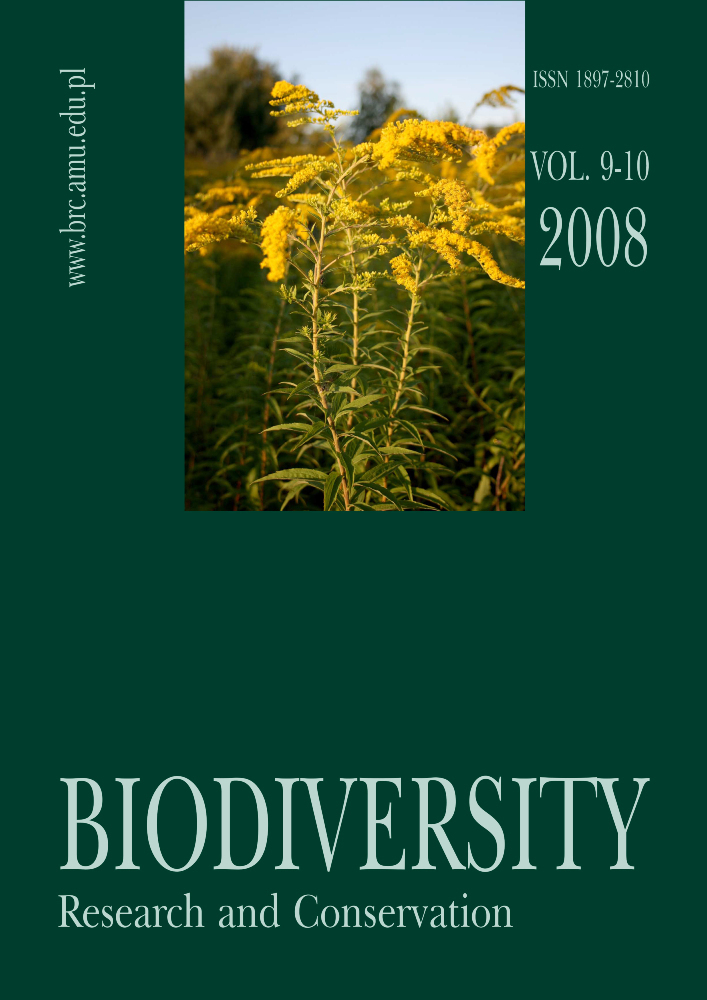Abstract
Fluctuating asymmetry (FA) is a non-specific stress indicator and describe developmental instability in bilateral structure. In plants, FA has been used as a tool for monitoring levels of ecological stress, however, in trees, high value of leaf FA has been assumed to indicate the level of environmental stresses. In this work, I analyzed the FA response to abiotic stress in the Betula pendula Roth leaves in two contrasting sites (polluted vs unpolluted). I also investigated whether another biometrical leaf feature is able to determine FA as an environmental stress indicator. After the cluster analysis and mixed-model ANOVA, I selected one feature, which was leaf apical angle. Results showed significant differences (using chi square test) in apical angle FA in the unpolluted site as compared to the polluted one. Concluding, I suggested that plants living in more stressful sites are more symmetrical and leaf FA for plant species with a wide ecological distribution such as Betula pendula should be used as an index of environmental quality.
References
AMBO-RAPPE R., LAJUS D. L. & SCHREIDER M. J. 2008. Increased heavy metal and nutrient contamination does not increase fluctuating asymmetry in the seagrass Halophila ovalis. Ecol. Indicat 8: 100-103. DOI: https://doi.org/10.1016/j.ecolind.2006.12.004
FRANIEL I. & WIĘSKI K. 2005. Leaf features of silver birch (Betula pendula Roth). Variability within and between two populations (uncontaminated vs Pb-contaminated and Zn-contaminated site). Trees 19: 81-88. DOI: https://doi.org/10.1007/s00468-004-0366-3
FREEMAN D. C., GRAHAM J. H. & EMLEN J. M. 1993. Developmental stability in plants: symmetries, stress and epigenesist. Genetica 89: 97-119. DOI: https://doi.org/10.1007/BF02424508
HOCHWENDER C. G. & FRITZ R. S. 1999. Fluctuating asymmetry in Salix hybrid systems: the importance of genetic versus environmental causes. Evolution 53: 408-416. DOI: https://doi.org/10.1111/j.1558-5646.1999.tb03776.x
HÓDAR J. A. 2002. Leaf fluctuating asymmetry of Holm oak in response to drought under contrasting climatic conditions. J. Arid Environ. 52: 233-243. DOI: https://doi.org/10.1006/jare.2002.0989
KOZLOV M. V., WILSEY B. J., KORICHEVA J. & HAUKIOJA E. 1996. Fluctuating asymmetry of birch leaves increases under pollution impact. J. Appl. Ecol. 33: 1489-1495. DOI: https://doi.org/10.2307/2404787
MAL T. K., UVEGES K. & TURK W. 2002. Fluctuating asymmetry as an ecological indicator of heavy metal stress in Lythrum salicaria. Ecol. Indicat. 1: 189-195. DOI: https://doi.org/10.1016/S1470-160X(02)00004-3
MÜLLER A. P. 1998. Developmental instability of plants and radiation from Chernobyl. Oikos 81(3): 444-448. DOI: https://doi.org/10.2307/3546765
PALMER A. R. & STROBECK C. 1986. Fluctuating asymmetry. Measurement, Analysis, Patterns. Ann. Rev. Ecol. Sys. 17: 391-421. DOI: https://doi.org/10.1146/annurev.es.17.110186.002135
PALMER A. R. & STROBECK C. 2003. Fluctuating Asymmetry Analyses Revisited. In: M. POLAK (ed.). Developmental Instability (DI). Causes and Consequences, pp. 279-319. Oxford University Press, London. DOI: https://doi.org/10.1093/oso/9780195143454.003.0017
RETTIG J. E., FULLER R. C., CORBETT A. L. & GETTY T. 1997. Fluctuating asymmetry indicates levels of competition in an even-aged poplar clone. Oikos 80(1): 123-127. DOI: https://doi.org/10.2307/3546523
License
Copyright © by Adam Mickiewicz University, Poznań, Poland, Department of Plant Taxonomy, 2008OPEN ACCESS




